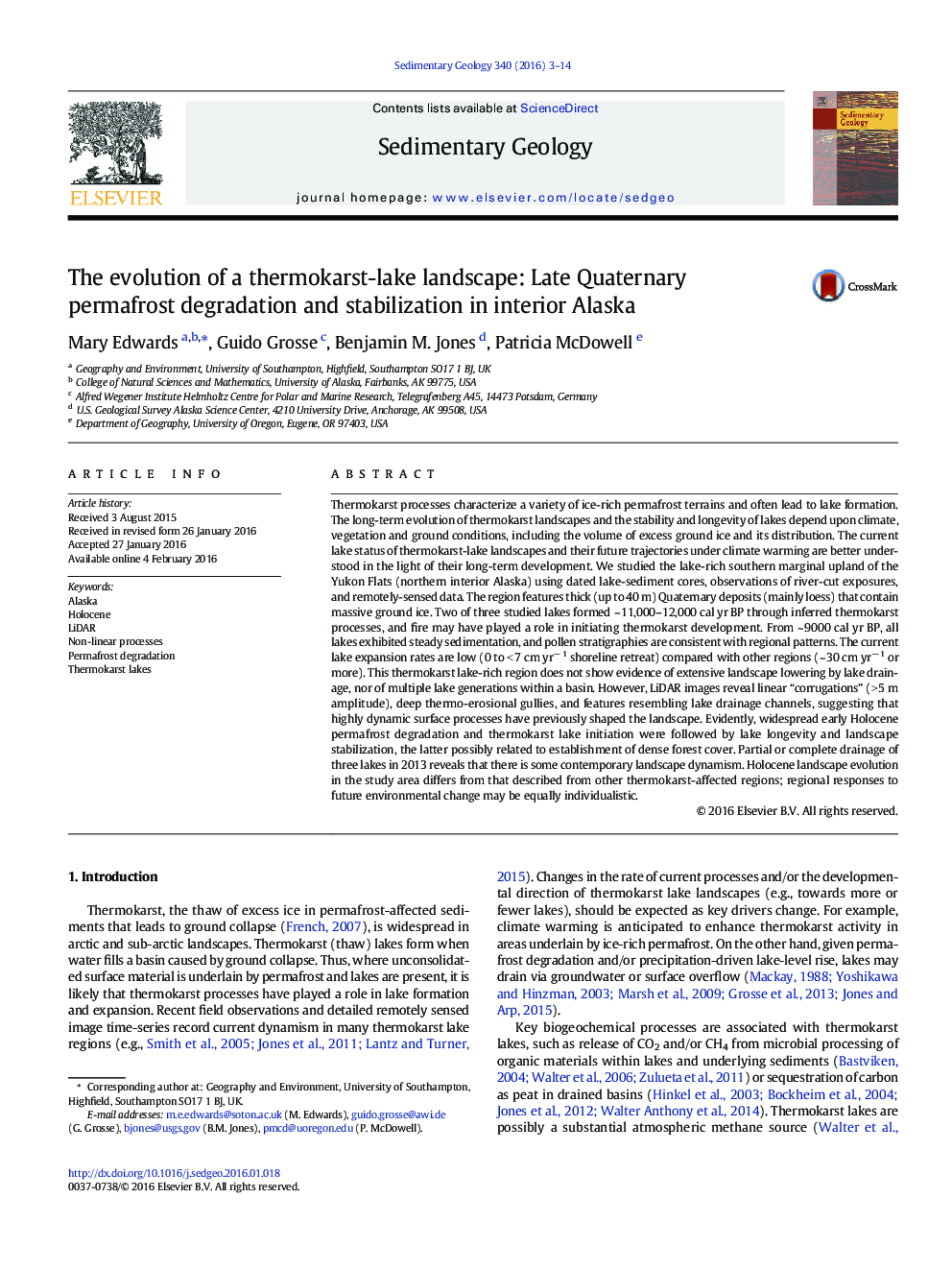| کد مقاله | کد نشریه | سال انتشار | مقاله انگلیسی | نسخه تمام متن |
|---|---|---|---|---|
| 4688930 | 1636023 | 2016 | 12 صفحه PDF | دانلود رایگان |
• Uplands bordering the Yukon Flats, Alaska, feature numerous, deep thermokarst lakes.
• Dated sediment cores reveal that lakes formed as early as 12,000–10,000 years ago.
• LiDAR imagery shows that widespread disruption of the land surface has occurred.
• Gullying and slope failure reflect permafrost degradation preceding lake formation.
• Early-Holocene dynamism was followed by stabilization and conifer forest expansion.
Thermokarst processes characterize a variety of ice-rich permafrost terrains and often lead to lake formation. The long-term evolution of thermokarst landscapes and the stability and longevity of lakes depend upon climate, vegetation and ground conditions, including the volume of excess ground ice and its distribution. The current lake status of thermokarst-lake landscapes and their future trajectories under climate warming are better understood in the light of their long-term development. We studied the lake-rich southern marginal upland of the Yukon Flats (northern interior Alaska) using dated lake-sediment cores, observations of river-cut exposures, and remotely-sensed data. The region features thick (up to 40 m) Quaternary deposits (mainly loess) that contain massive ground ice. Two of three studied lakes formed ~ 11,000–12,000 cal yr BP through inferred thermokarst processes, and fire may have played a role in initiating thermokarst development. From ~ 9000 cal yr BP, all lakes exhibited steady sedimentation, and pollen stratigraphies are consistent with regional patterns. The current lake expansion rates are low (0 to < 7 cm yr− 1 shoreline retreat) compared with other regions (~ 30 cm yr− 1 or more). This thermokarst lake-rich region does not show evidence of extensive landscape lowering by lake drainage, nor of multiple lake generations within a basin. However, LiDAR images reveal linear “corrugations” (> 5 m amplitude), deep thermo-erosional gullies, and features resembling lake drainage channels, suggesting that highly dynamic surface processes have previously shaped the landscape. Evidently, widespread early Holocene permafrost degradation and thermokarst lake initiation were followed by lake longevity and landscape stabilization, the latter possibly related to establishment of dense forest cover. Partial or complete drainage of three lakes in 2013 reveals that there is some contemporary landscape dynamism. Holocene landscape evolution in the study area differs from that described from other thermokarst-affected regions; regional responses to future environmental change may be equally individualistic.
Figure optionsDownload high-quality image (363 K)Download as PowerPoint slide
Journal: Sedimentary Geology - Volume 340, 1 July 2016, Pages 3–14
